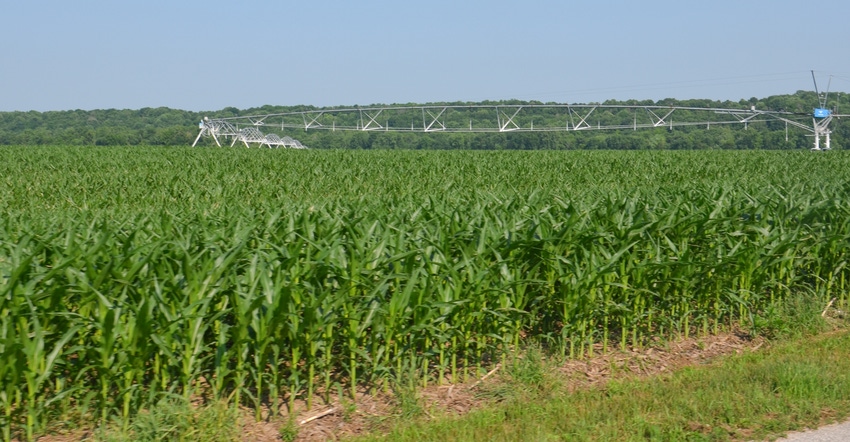May 10, 2019

By Don Donovan
Do you farm soils that benefit from irrigation? Do you grow high-value crops that require irrigation? Would you like to improve the efficiency of your irrigation system, reducing input costs while still getting the needed benefits from your investment in irrigation? With very tight margins for most commodities today, any input reduction is an increase in potential profit.
Several farmers, particularly in southwest Indiana, are trying to improve the health of their soil while using irrigation. Many are discovering that using cover crops in their irrigation systems can help reduce costs, thereby increasing potential profit margin. If you’re not using cover crops, you probably are wondering how they can make a difference.
Are you limited to how much water you can put on at one time or in one pass of your unit? Do you see runoff from your irrigated field even if you only apply a half-inch of water? Would you like to increase the amount of water you can put on in one pass? Can introducing cover crops into your system make that much difference? If you answered “yes” to the first three questions, the good news is that the answer to the fourth question is also “yes.” Cover crops can make a difference.
How covers help
Cover crops, when used with a no-till or strip-till system, will increase soil organic matter and improve soil aggregation, which leads to not only improved water infiltration, but also improved water-holding capacity. Leaving crop residues on the soil surface also decreases evapotranspiration.
Better infiltration, improved water-holding capacity and decreased evapotranspiration will lead to the need for less frequent irrigation passes, more efficient use of applied water and lower input costs for irrigation. Your bottom line will increase due to the decrease in amount of energy inputs.
There is another step you can take even beyond cover crops to boost efficiency. Some farmers in southwest Indiana who irrigate have taken that next step and are installing soil moisture probes in fields with irrigation systems.
These probes are installed for use during the growing season and provide real-time soil moisture data at different depths of the rooting zone. The data is available on your computer or mobile device, allowing you to make changes quickly to your irrigation application schedule as needed. The data helps you make better decisions on when to start irrigating, how to irrigate through the most sensitive crop stages of pollination and early grain fill, as well as when you can stop irrigating after natural rain events.
Energy costs are high. The increased efficiency of application and water use will lead to reduced inputs for your irrigation system and more profit from your crop.
Are you looking to improve your irrigation bottom line? Consider the benefits of healthier soil and installing soil moisture probes for the 2019 irrigation season to improve your bottom line. Profit is more than just yield; it’s also about being efficient with inputs.
Donovan is a district conservationist with the Natural Resources Conservation Service. He writes on behalf of the Indiana Conservation Partnership.
You May Also Like




